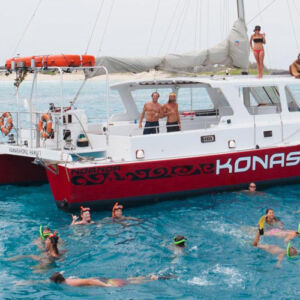Cliff Jumping at South Point: A Thrilling and Safe Guide
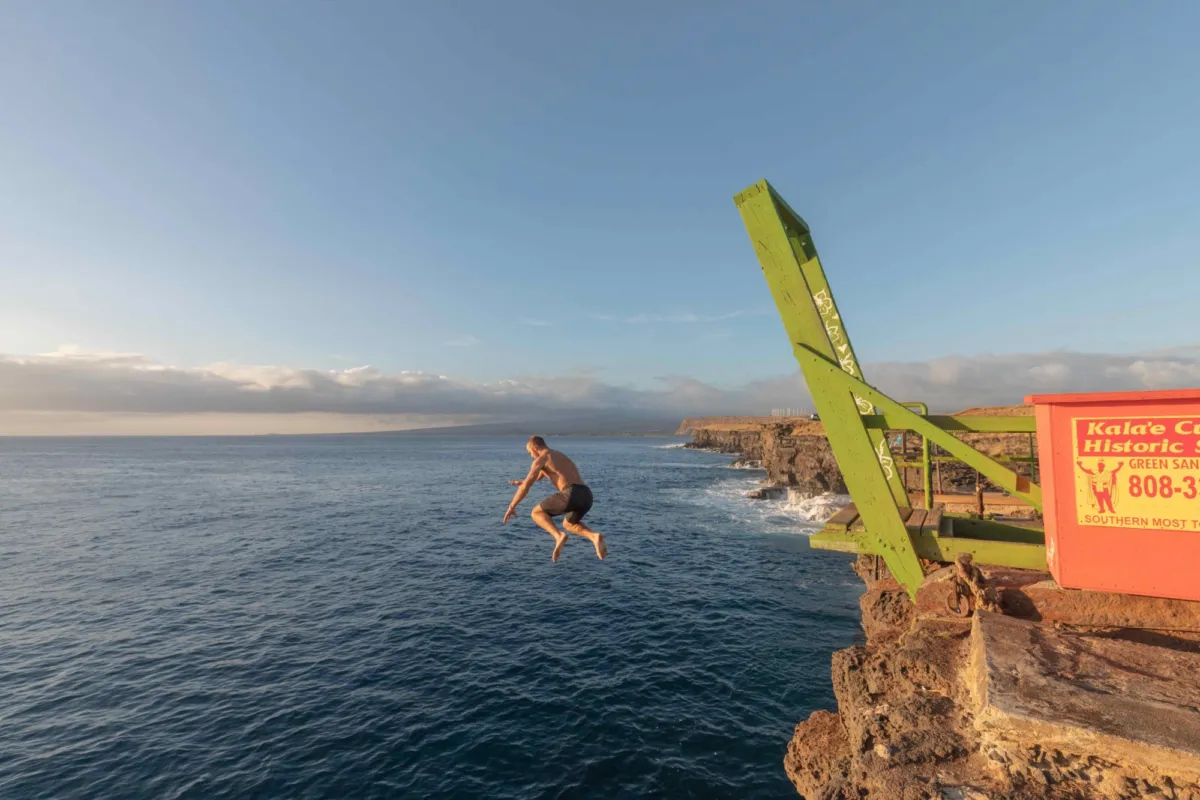
Activities featured in this post.
Post updated: November 02, 2025
The Ultimate Freefall—Are You In?
When it comes to cliff jumping in Hawaii, I have a lot of experience. I've leapt off iconic spots like Waimea Bay on Oahu, Black Rock in Maui, Shipwreck Beach in Kauai and countless others that I wouldn’t dare name. So when I say South Point on the Big Island is a "jump" above the rest, I assure you, it is.
South Point, or Ka Lae in Hawaiian, is the southernmost point in the United States. Located outside the town of Na'alehu, it is about a 1.5-hour drive from the tourism hub of Kailua-Kona, which is home to our favorite Kona Catamaran Sailing & Snorkel Tour and most major hotels. This rugged cliffside is stunningly beautiful, and offers a challenging yet rewarding cliff-jumping experience with a 40-foot drop into the Pacific Ocean. This guide aims to provide you with key insights, safety measures, and what to expect if you decide to take the plunge at this iconic location.

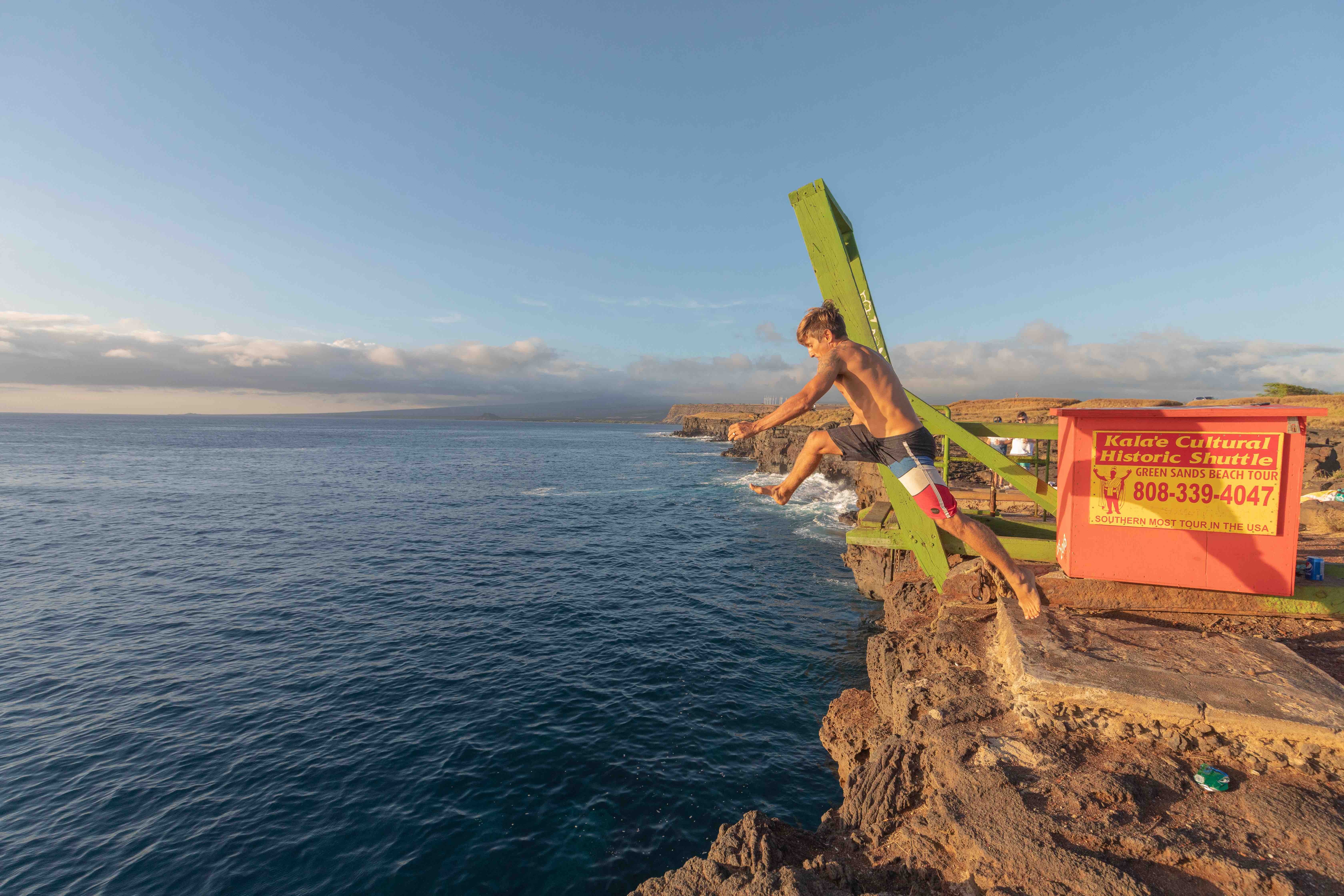
Safety First—No Exceptions!
Let's get serious. Cliff jumping can be lethal if not approached with the utmost caution. We're not fearmongering, but many people have been injured and some have even died here. South Point is notorious for its changing ocean conditions—swirling tides, temperamental currents, and powerful waves can spell disaster.
Dangerous ocean conditions to lookout for are: steady winds creating “white caps” on the surface or swell moving alongside the cliffs. Both are telling signs that there is a lot of current in the water that might not be visible to the untrained eye. Another more obvious danger is if waves are crashing into the cliffs below, which will make it impossible to climb back up.
The ideal surface condition is a smooth and flat ocean with no signs of current, wind, or waves. South Point can get so calm it almost looks like a lake made out of glass. These are the conditions you should wait for. And if you don’t get them, move on.
Official Signs warning "Danger: No Cliff Diving Allowed" are posted for a reason. Even the good folks at Ka'u Hospital have commented on the number of thrill-seekers they see each year for cliff-jumping-related injuries.
That said, according to the Hawaii Department of Land and Natural Resources, all park activities fall under a "use common sense" rule. Cliff jumping isn’t explicitly forbidden, but it's not encouraged either. The legal status is murky, so proceed at your own risk.
Tips for a Safe Leap
- Check Water Depth: Always ensure the water below is deep enough and free of rocks.
- Observe Ocean Conditions -If the wind is whipping or the waves are crashing, postpone your leap. Conditions like these can turn an adventure into an accident.
- Watch the Pros: Observe locals or experienced jumpers.
- Feet First: Jump feet first. Close legs together and arms to your side before entering the water. Avoid dives or flips for your first time.
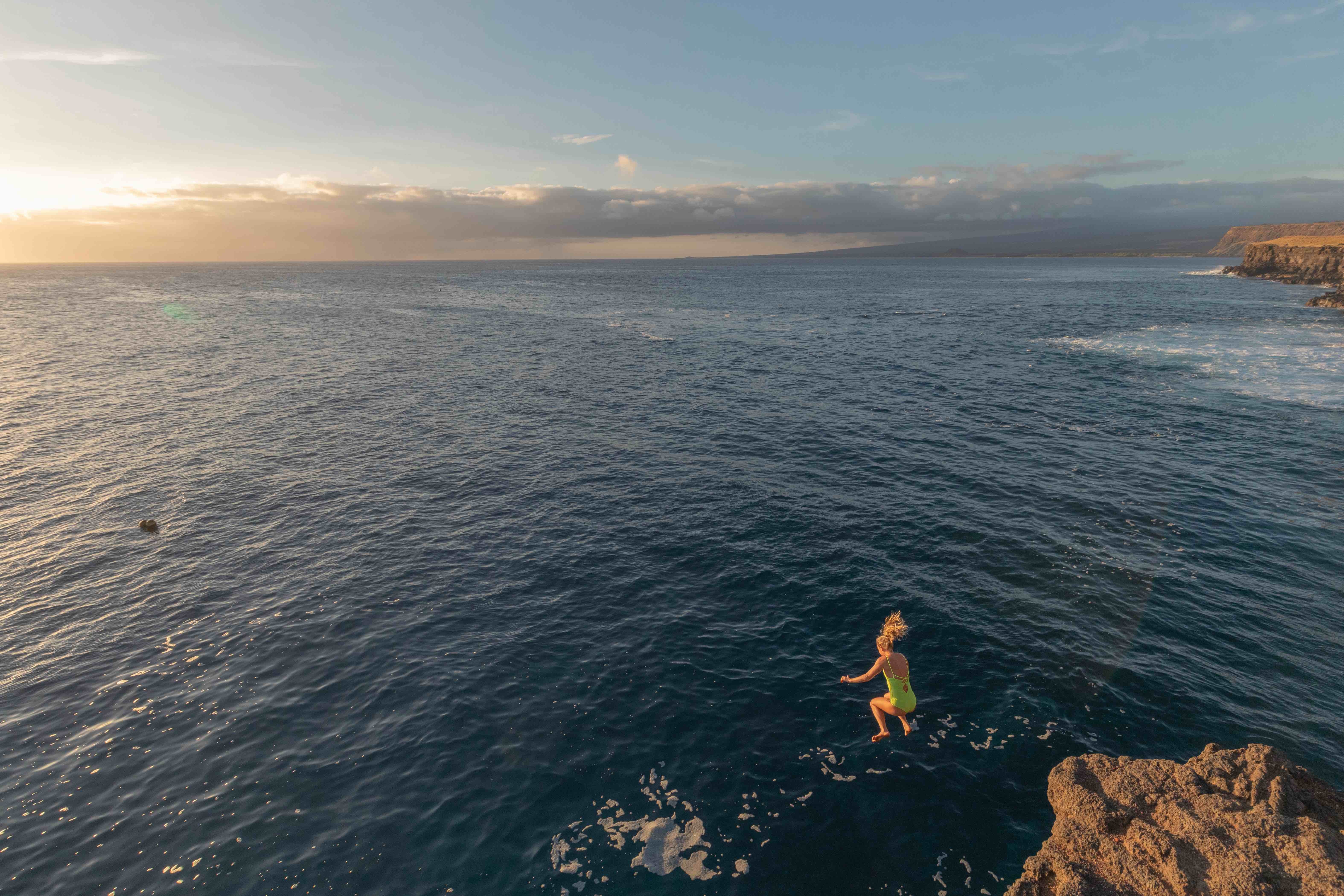
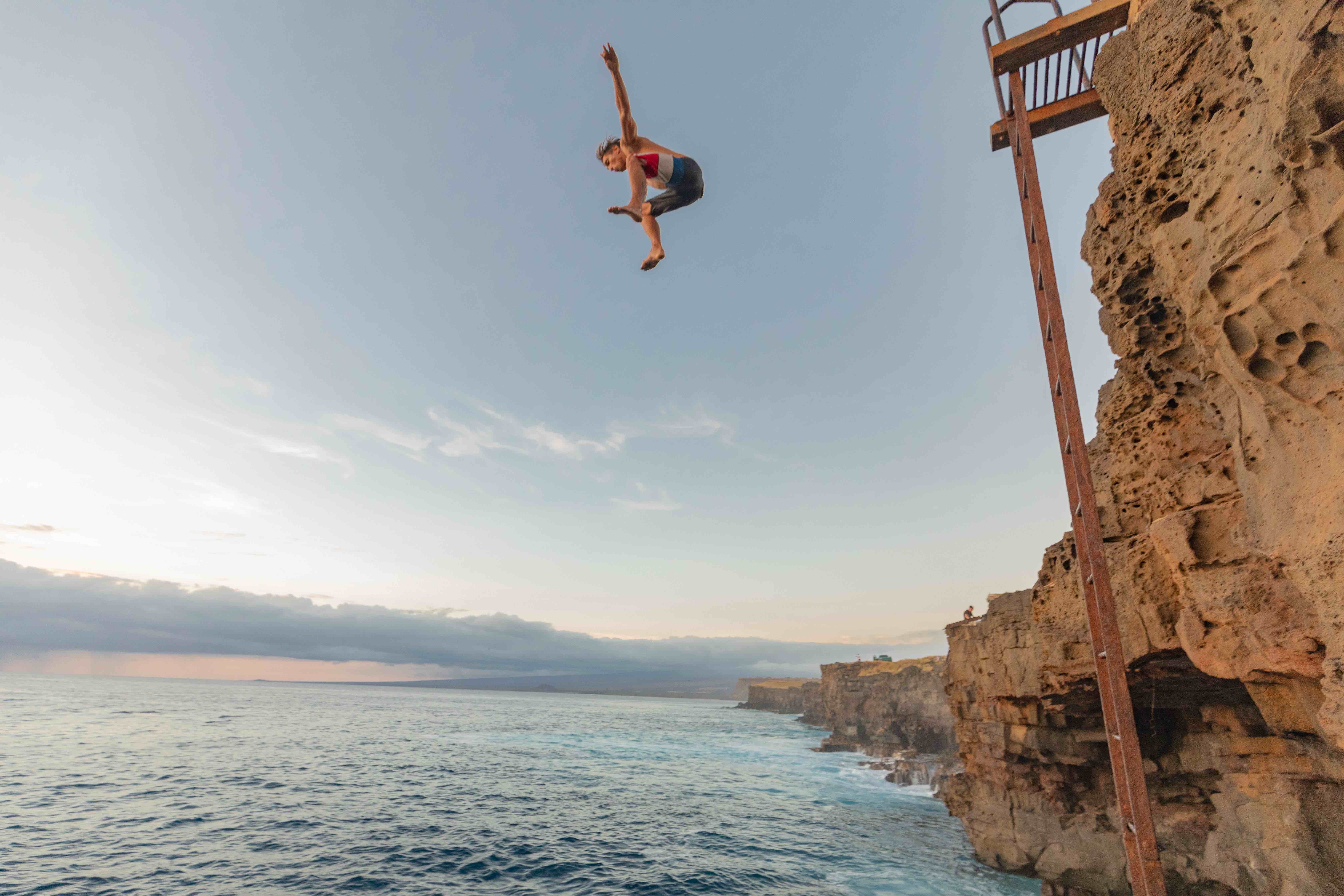
Your Jump-By-Jump Guide to South Point Cliff Jumping
The Arrival
Driving 10 miles down the pot-holed but paved South Point Road (pretty much any car can make it), you will pass open expanses of grassy fields with cows grazing and a cluster of the Pakini Nui wind turbines. Once you reach the unmarked dirt and rocky parking area find a place to leave your car. You're now at ground zero for cliff-jumping excitement.
The Scenery
As you approach the cliffs, the emerald ocean below is a spectacle, but so are the reddish-brown cliffs that look like they've been painted by the Gods. Take a moment to appreciate the beauty of the area.
Taking the Plunge
You’re here. Your heart is racing. Stay focused. Look for the wooden canoe launch known as “the Hoist”, used by local residents to lower their canoes into the ocean. Right next to it, walk up to the concrete pad on the edge of the cliff. This is your best jump spot. Feel the Pacific breeze, take a deep breath, and…without hesitation, JUMP! Forty-feet never felt so exhilarating. It feels as if you are suspended in time, both fast and slow at once.
The Climb
After your aquatic thrill, there is an iron ladder fastened to the cliff to get back up. Although isn't exactly a stairway to heaven. It's not bolted into the rocks. Instead it is secured by chains and sways a bit. Ensure you have the upper body strength to first pull yourself up the bottom rung and out of the water without footholds. Then you will have to be able to scale it 40ft back to the top.
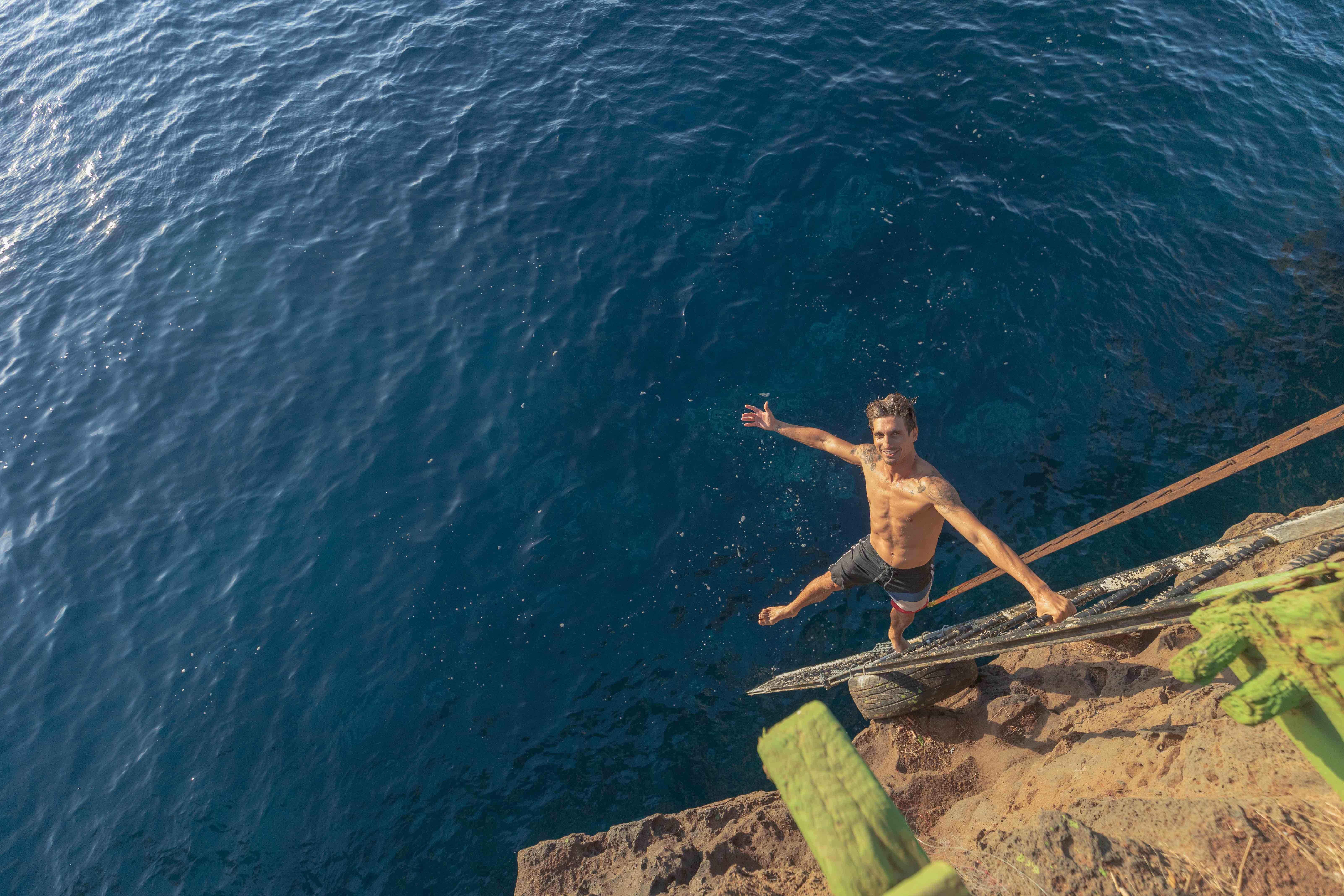
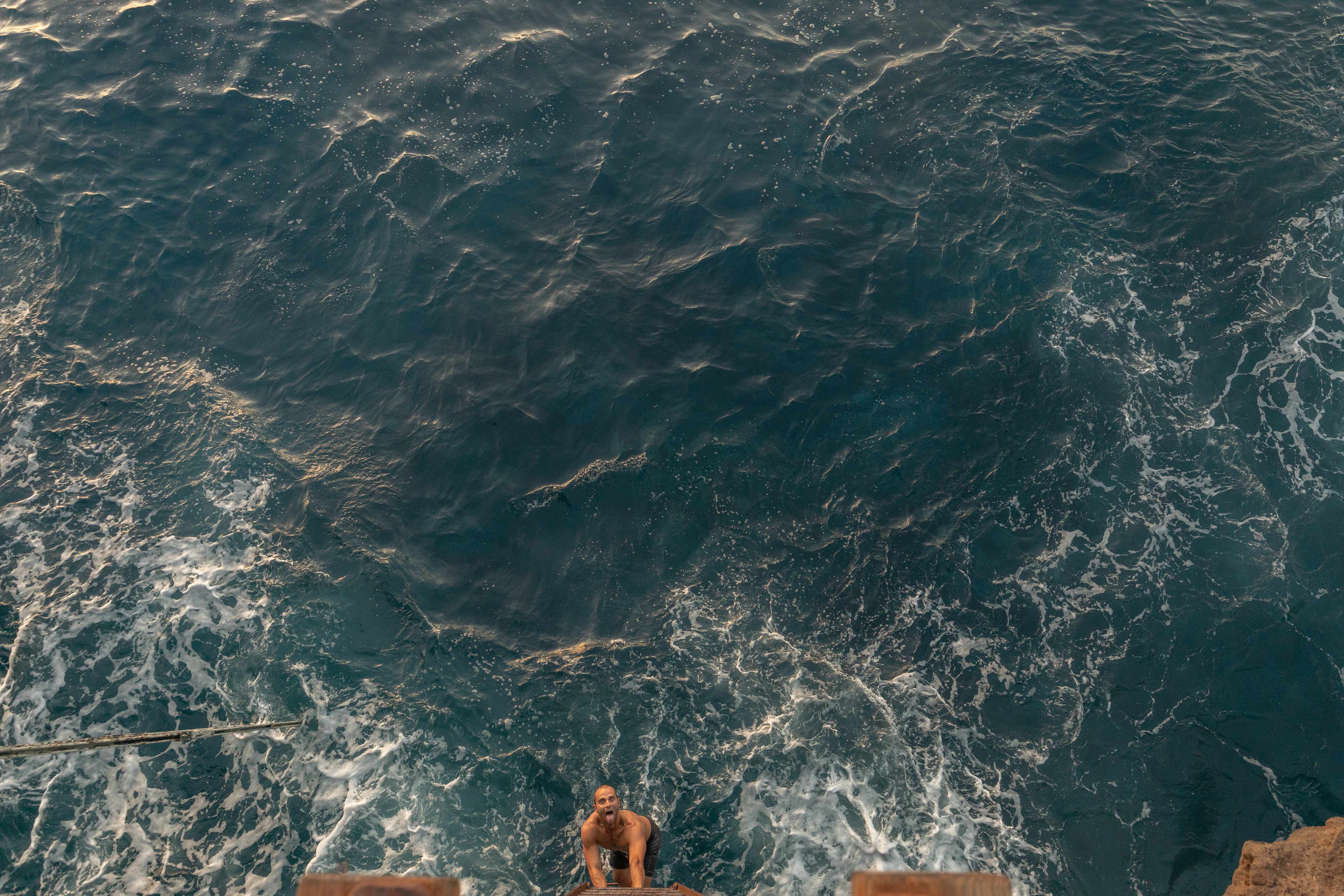
Cultural Significance that deserves Respect
Ka Lae is more than just a cliff-jumping destination; it holds significant historical importance as one of the earliest Hawaiian settlements. The site has an extensive archaeological record, which has led experts to believe that this is likely where the Polynesians first made landfall. The Big Island's proximity to Tahiti makes Ka Lae a plausible point of first contact.
Furthermore, the area contains remnants of ancient Hawaiian culture, including a temple known as a "heiau" and a dedicated fishing shrine. One of the most intriguing features at Ka Lae is the presence of holes drilled into the rock ledges by ancient Hawaiians. These holes were used to moor canoes, allowing fishermen to drift out into deeper waters without being carried away by the currents.
In essence, Ka Lae is not just an adrenaline-pumping location but also a site deeply embedded in Hawaiian history and maritime innovation. Please tread lightly.
In Conclusion
South Point cliff jumping is not for the faint-hearted. Remember, safety can’t take a backseat, so read the signs, gauge the conditions, and when in doubt, stay out!
And if you’re looking for a safer way to experience the southwest coast of the Big Island, the Kayak Rentals at Captain Cook Monument offer a peaceful, scenic adventure across Kealakekua Bay, where you can paddle over coral reefs, watch spinner dolphins, and explore one of Hawaiʻi’s most historic snorkeling spots without the leaps, cliffs, or adrenaline rush of South Point.
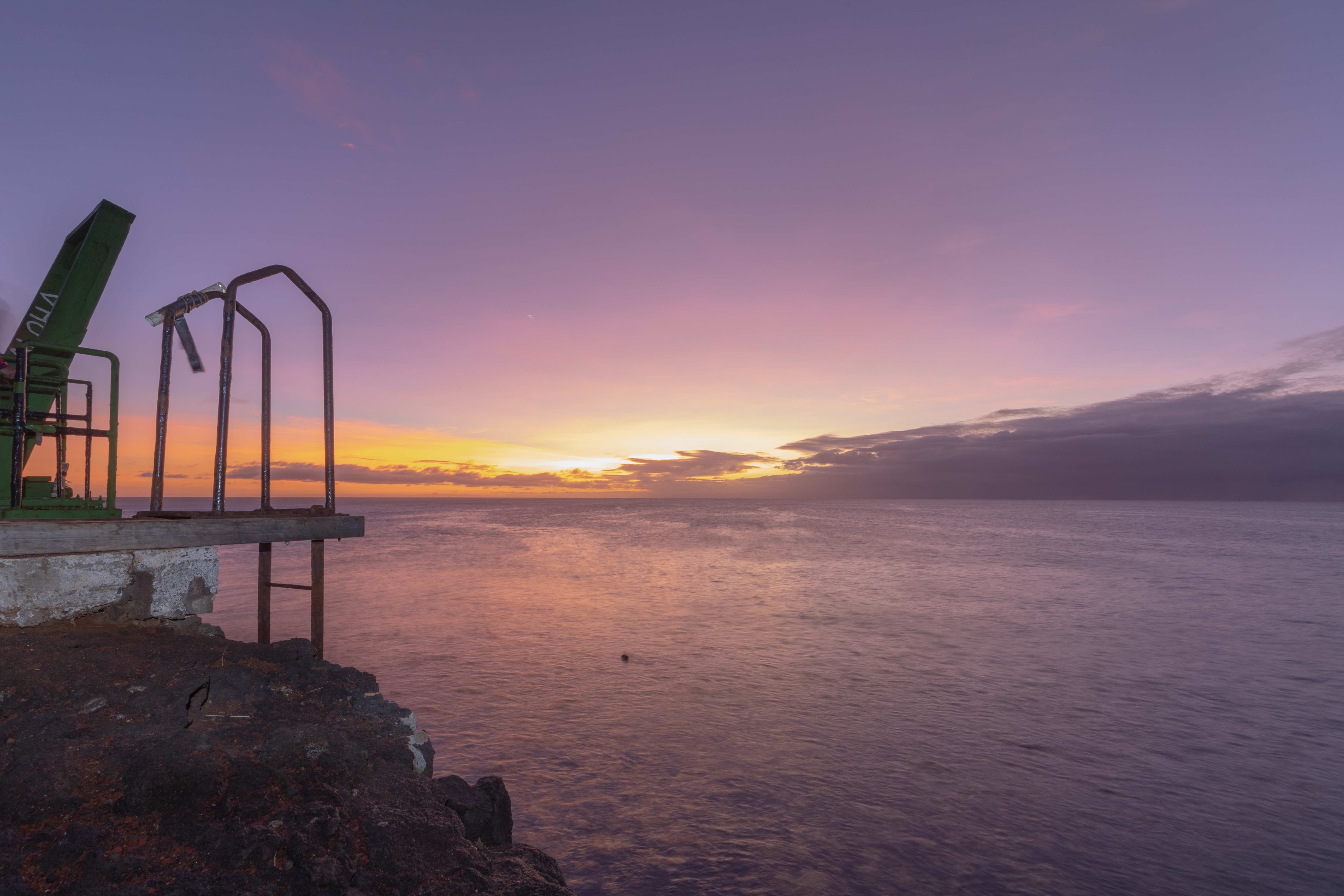
FAQ
Q: How far is South Point from Kona?
A: About a 1.5-hour drive.
Q: Is cliff jumping legal at South Point?
A: It’s a gray area. Proceed at your own risk.
Q: What are some safety tips?
A: Check water depth and ocean conditions, watch experienced jumpers, and always jump feet first.
Q: Where do I jump from?
A: Look for the paved concrete pad next to the wooden canoe launch.
Q: How do I get back up after the jump?
A: Use the iron ladder or free-climb the rocks.
Disclaimer: The information provided is based on personal experiences and research. Always prioritize your safety and consult local guidelines.
